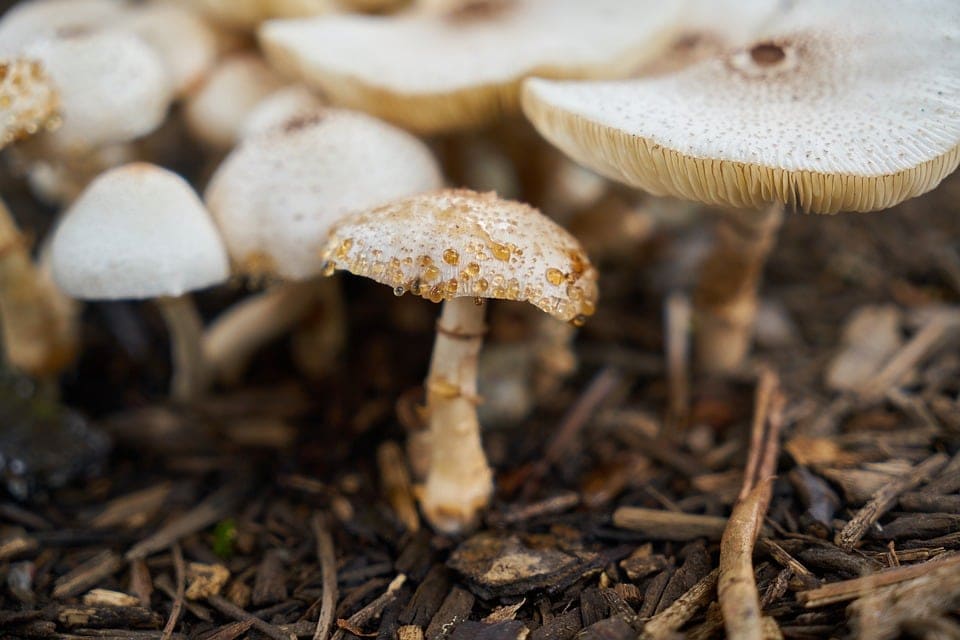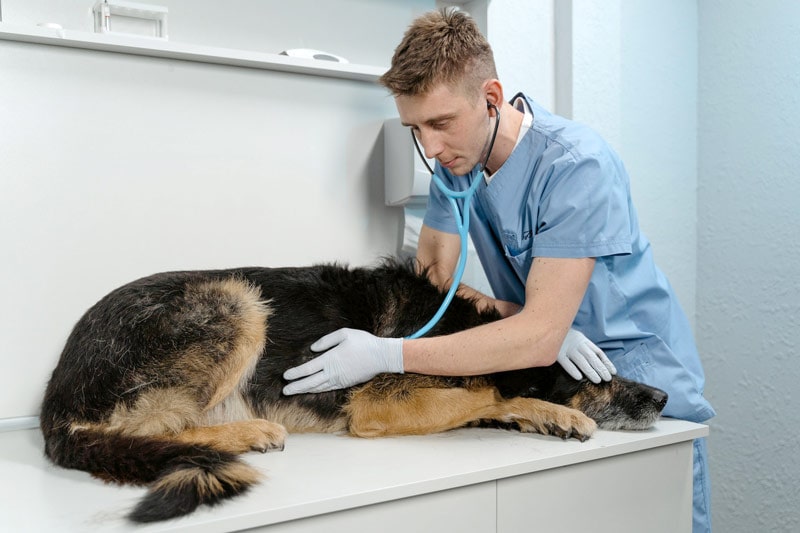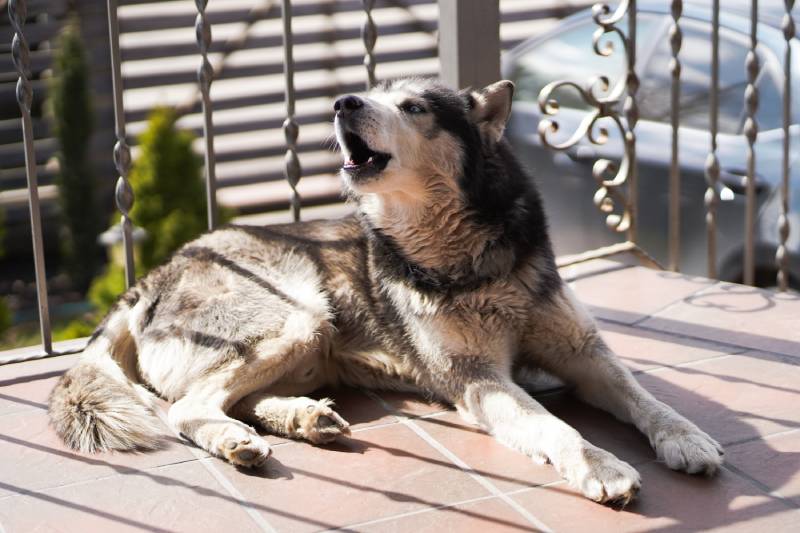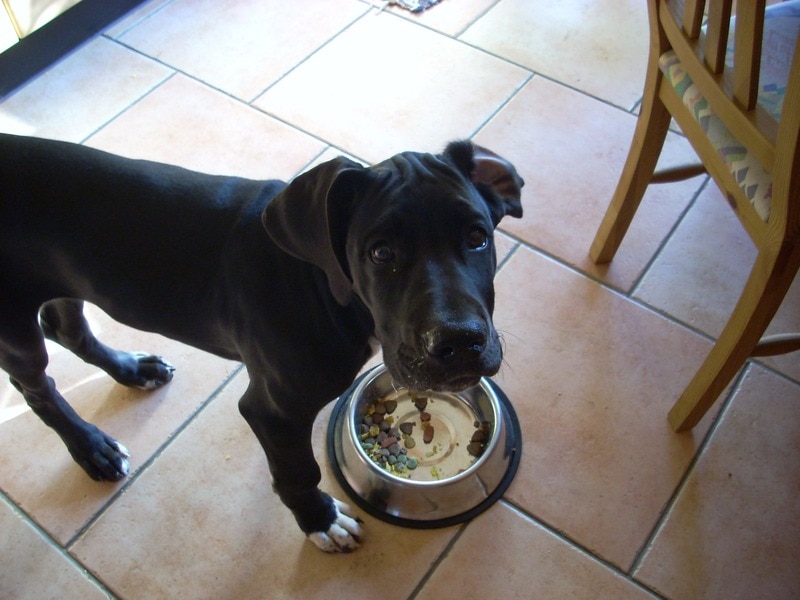Can Dogs Eat Mushrooms? Vet-Approved Facts & FAQ

Updated on

A mushroom is the fleshy, fruiting body of a fungus. They are typically found above ground and come in many shapes, sizes, and types. Humans consume certain mushrooms, and as a canine pet owner, you might be wondering if mushrooms are safe for dogs.
As a rule of thumb, store-bought mushrooms are safe for dogs, while wild mushrooms may be toxic and should always be avoided.
 Can Dogs Eat Wild Mushrooms?
Can Dogs Eat Wild Mushrooms?
Wild mushrooms pose a danger to dogs (and other animals, including people). If you’re ever out on a walk with your pup and you notice them eating a mushroom, you need to stop them immediately and take them to their vet. Wild mushrooms can be dangerous, and their consumption may elicit a variety of signs ranging from mild stomach upset to severe intoxication with the risk of organ failure, which is why even experienced mushroom collectors are incredibly careful. In addition, most mushrooms are very hard to identify.
Dogs should never be allowed to eat wild mushrooms while outdoors. Several of the most toxic mushrooms are innocuous and inconspicuous. Some can even mimic non-toxic mushrooms; it’s easy to imagine the red and white poisonous mushrooms, but many toxic species are plain and unobtrusive.
Some owners believe that dogs won’t eat anything toxic or that doesn’t smell right, but many toxic mushrooms have enticing or no smell. Some mushrooms, like the Death Cap (Amanita phalloides), have a fishy smell that dogs find very attractive. These smells explain why some dogs will willingly eat toxic mushrooms. While some mushrooms have bright warning colors, it is important to remember that our canine friends have vision that is different than ours, and they may not interpret the colors as we do.

Some Types of Wild Mushrooms That Are Dangerous to Dogs
Almost no wild mushroom is truly safe for your pup. However, some are far more toxic than others. Unless you have years of professional experience, don’t try to identify mushrooms you find on walks, as even trained mycologists sometimes make mistakes. Many types of fungi look incredibly similar to one another, so always err on the side of caution and make the trip to the vet’s office if you see your pup chewing on a mushroom.
Some of the most dangerous mushrooms your dog might encounter when out on a walk are toadstools and those that cause liver toxicity. These include:
- Death Cap Mushroom (Amanita phalloides)
- Angel of Death (Amanita ocreata)
- False Parasol (Lepiota)
- Deadly Galerina/Funeral Bell (Galerina marginata)
- Fly Agaric (Amanita muscaria)
- Panther Cap (Amanita pantherina)
- Jewelled Deathcap (Amanita gemmate)
- Destroying Angel (Amanita bisporigera)
However, there are other mushrooms that are also harmful to dogs. These include mushrooms that are hallucinogenic, contain muscarinic agents (interfere with nerve function), or cause gastrointestinal upsets. Examples of such mushrooms include the following:
- Gymnopilus
- Psilocybe
- Panaeolus
- Inocybe
- Clitocybe
- Beefsteak Mushroom (Gyromitra esculenta)
- Verpa mushrooms
- Helvella mushrooms
- Entolomo
- Boletus
What Are the Signs of Mushroom Poisoning in Dogs?
If your dog eats a mushroom, there may be various signs, depending on the amount ingested and the mushroom type. This is because some mushrooms contain toxins that act on different body parts, which can have far-reaching effects, while others are more localized.
Some mushrooms contain toxins that affect the nervous system, causing neurological issues such as loss of coordination, abnormal gait, tremors, or seizures.
Others may cause gastrointestinal upset or distress, making dogs excessively drool, vomit, or have diarrhea or bloody stool.
Some particularly nasty mushrooms, especially those that affect the liver, cause a wide range of signs as they damage major organs throughout your pup’s body.
If you have been out on a walk and suspect your dog has eaten a mushroom, here are some signs of toxicity that you might notice:
- Vomiting
- Diarrhea
- Abdominal Pain
- Weakness
- An abnormal gait
- Excessive drooling or panting
- Lethargy
- Jaundice (yellowing of the skin, eyes, and mucous membranes)
- Seizures
- Collapse
- Coma
It is important to note that you should not wait for these signs if you ever witness your dog eating a wild mushroom; instead, you should take them to a vet immediately.

What Should I Do If My Dog Eats A Wild Mushroom?
If you see your dog eating a wild mushroom, you should:
- Stop them from eating immediately.
- Collect the mushroom without touching it with your bare hand if you can. Place the mushroom on a paper or wax-paper bag, if possible. Plastic bags should be avoided as they can cause the mushroom to change color, deteriorate, or otherwise make identification difficult. Alternatively, you can save time by taking a photo of the mushroom while rushing your dog to the vet.
- Take your dog to their own vet’s office or an emergency vet’s office as soon as possible.
- Explain to your vet when your dog ate the mushroom, how much they ate, and any signs of illness they’re displaying. Try to describe the mushroom or give it to them if you have it.
Is There Treatment for Mushroom Toxicity?
Your veterinarian will decide which treatment is best for your dog, depending on a few factors. What type of mushroom has been eaten, the time since ingestion, how much your dog weighs, and the signs your dog is displaying will all be factored in when your vet decides on the best treatment. The identification of the mushroom your dog has eaten is useful for this process, as the vet can give specific treatments as soon as the effects of the toxins the mushroom contains are known.
If your dog ate the mushroom recently, your vet might induce them to vomit to try and clear the mushroom from their stomach. This can be done at the same time as supportive treatment, such as oxygen or fluid therapy. Other drugs might also be administered to counteract the toxins the mushroom has introduced to your pup. Your dog will likely have to be observed at the vet’s office for a while to ensure that they’re okay and to run tests. Your vet can continue treatment and monitor them as they recover.

Preventing Accidental Mushroom Consumption for Your Dog
As with so many aspects of pet care, prevention is much better than treatment and cure. If you’re unfamiliar with the mushrooms that are present in your area, try searching online to familiarize yourself with any wild mushrooms that might be present in your area. If you live in the US, you can refer to the North American Mycological Association.
While walking with your dog, keep them on a leash, especially when you explore new trails or parks. A dog that is off-leash might scavenge more than one that is on a leash and is more difficult to keep track of. Additionally, it is important to note that in certain jurisdictions, having a dog off-leash is against the law.
Mushrooms grow on organic dead matter and often bloom in great numbers after heavy rainfall or during periods of high humidity. Therefore, it is a good idea to survey the weather and check your dog-walking areas or yard to ensure that there aren’t items like rotting pieces of wood, dead leaves, or other debris.
Are Any Mushrooms Healthy and Safe for Dogs?
Store-bought mushrooms are generally safe for dogs to eat as they’re non-toxic and won’t cause harm, but they aren’t particularly healthy or nutritious, either. Therefore, you could steer clear of them altogether and offer other healthy and tasty treats instead.
With that being said, here are some mushrooms that are safe for dogs:
- White button
- Cremini
- Portobello
- Baby bella
- Shiitake
- Porcini
- Maitake
Keep in mind that although safe, all the mushrooms listed above MUST be cooked before offering them to your dog.
What Can I Feed My Dog Instead of Mushrooms?
If you want to offer your dog some human snacks that are healthy for them in moderation, there are alternatives to mushrooms you can use. These include:
- Carrots
- Cucumbers
- Blueberries
- Apples
- Pumpkin
These treats are best offered fresh, adequately washed, and prepared without any additional ingredients, sauces, or spices.
Final Thoughts
Mushrooms that are store-bought are generally safe for dogs, although they aren’t particularly healthy and are not something you should actively add to your dog’s diet.
Dogs should not be fed wild mushrooms of any kind as many wild mushrooms are dangerous for them. If you ever suspect that your dog has ingested a wild mushroom, immediately seek veterinary care.
There are several healthy alternatives to mushrooms that can be given to your dog as an occasional treat or snack. These include options such as pumpkin, blueberries, and carrots.

 Can Dogs Eat Wild Mushrooms?
Can Dogs Eat Wild Mushrooms?









